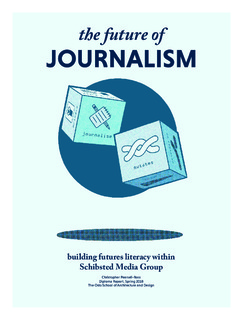The future of journalism
Description
For me, the most exciting problems design can grapple with are large, muddy, and important. This might sound strange from someone who spent 7 years in a dusty workshop, getting lost in the details of designing and building furniture. Over my time at AHO I have tried to explore how bridging disciplines and collapsing scales can help us to address wicked problems; how strategic, and yet small-scale and aesthetic, interventions can fuel change. Journalism is at the heart of several wicked problems. It is a critical part of a democratic society, and yet all of our interactions with it are personal and mediated through objects of one kind or another. It is at the same time both systemic and personal, macro and micro. At a public lecture at AHO this spring, Cameron Tonkinwise said “There are ways that objects enable transitions.” (Tonkinwise, 2018) I hope that the results of this project, in some small way, have done just that, and have illustrated the value of working with an unabashedly multidisciplinary approach. All photographs, illustrations and graphics by the author, unless otherwise noted. This document has been formatted for printing on newsprint, meaning that some colours may appear duller than intended. a note on language Throughout the course of this project I have struggled with how to describe the people who will ultimately be using future products and services. Users is a commonly-used word in both UX and service design processes, but doesn’t adequately reflect the relationship people have to news media and journalism. At the same time, reader, listener, and viewer are commonly used in media environments, but are tied to specific types of media, and, like user and consumer, fail to address an emerging two way relationship between the producers and consumers of content (content: another problematic term). The word prosumer has emerged as an attempt to represent a dual-natured user, but has not been widely adopted outside of DIY and maker spaces. While it might not seem so important, our language shapes how we as designers imagine and engage with people. This is all just to say that we will need to explore new terms to represent new and complex relationships between actors, across different types of media. For now, though, I’ll try to stick with user and reader, even if they fall short, and people aren’t actually reading anything.
